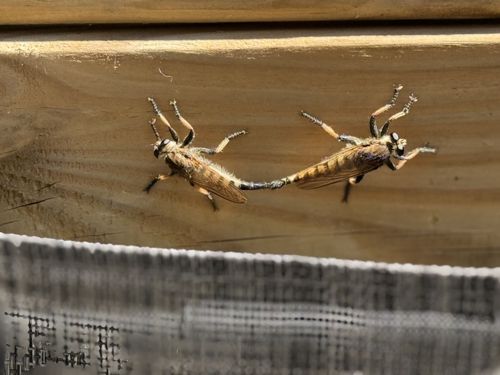Robber Fly
Scientific Name: Asilidae (family)
Order & Family: Diptera (Order), Asilidae (Family)
Size: Typically 9-30 mm (0.35-1.18 inches), though some species can be smaller or larger

Natural Habitat
Widely diverse habitats, including open grasslands, forests, deserts, and urban gardens, often perching on elevated positions like twigs, fences, or rocks to ambush prey
Diet & Feeding
Predatory; they hunt and feed on a wide variety of other insects, including flies, bees, wasps, butterflies, moths, grasshoppers, and even other robber flies. They inject their prey with neurotoxic and proteolytic enzymes, paralyzing and liquefying the internal tissues, then suck out the fluids.
Behavior Patterns
Known for their aggressive predatory behavior. They are agile fliers and will rapidly pursue and capture prey in mid-air. Males and females may be seen linked together, as in the image, during mating. Larvae are also predatory and live in soil or decaying wood, feeding on other insect larvae.
Risks & Benefits
Generally beneficial due to their role as predators of various insect pests, helping to control insect populations. They are not typically aggressive towards humans, but they can deliver a painful bite if provoked or mishandled, though it is not venomous to humans (beyond localized pain similar to a bee sting).
Identified on: 9/8/2025